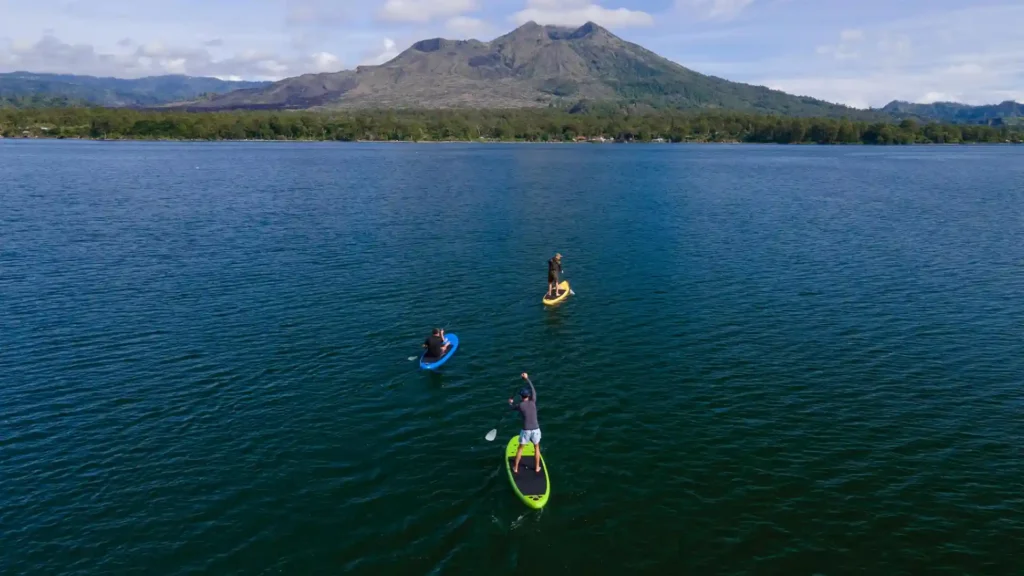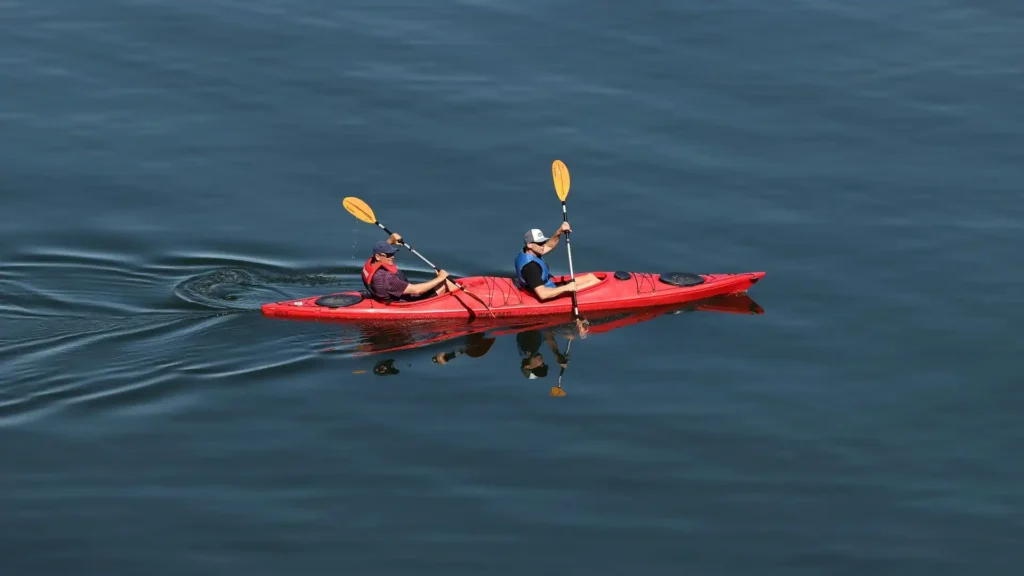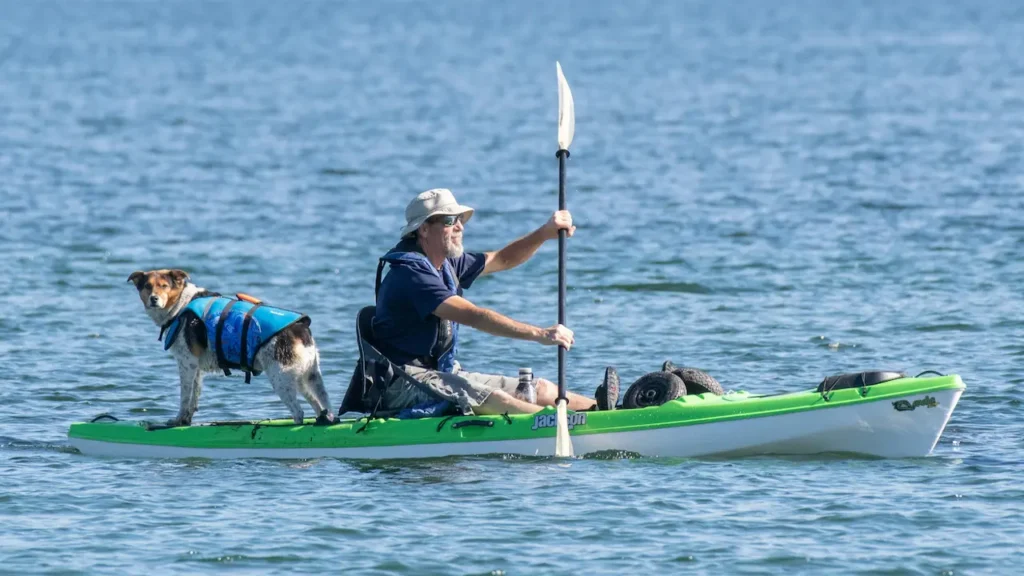Kayaking and camping together make for one of the most rewarding outdoor experiences you can have. It is not just paddling or setting up a tent; it is the freedom of reaching places that most people never see.
You can carry what you need in your kayak, pull up to a quiet shoreline, and sleep under the stars. The mix of water travel and nights in nature keeps people coming back.
Kayaking lets you explore places that no car or trail can take you. Camping gives you the time to stay there. Together, they create a trip that feels complete. You do not just see nature for an hour; you live in it for days.
This combo also teaches self-reliance. You plan your gear, your food, and your route. Each choice makes your trip smoother and safer. That planning builds skills that you use long after the trip is over.
There is another reason to care. Kayak camping opens up quiet coastlines, remote rivers, and hidden lakes. These are the places where you hear nothing but water and wind. Many people spend their whole lives without touching them.
What You Need to Know
Before your first trip, know that kayaking and camping are not the same as doing them separately. When you mix them, the way you pack, move, and plan changes. You need to think about weight, balance, and water at every step. A kayak has space, but it is limited and shaped in a way that demands careful packing.
Your tent, sleeping bag, and clothing will fit, but only if you pack them in smaller bags instead of one large one. Dry bags are your best friend here. They keep gear safe from splashes, rain, and the risk of tipping. Using different colors or sizes for different items makes it easier to grab what you need fast.
Food planning is not just about taste. Paddling burns energy, and you need meals that fuel you without slowing you down. Focus on foods that stay fresh without refrigeration. Dehydrated meals, nut butters, tortillas, granola, dried fruits, and jerky are smart choices.
Accessibility matters too. Pack snacks you can grab during a quick stop without unloading everything. Keep water close as well. Hydration is vital on the water, and you should drink before you feel thirsty. A simple water filter or purification tablets give you security when fresh sources are nearby.
Safety is another layer that cannot be skipped. Weather changes faster on open water than on land. A calm morning can shift into wind, waves, or storms by afternoon. Always check forecasts before you go and monitor conditions during the trip.
For coastal trips, pay attention to tides and currents. For rivers, check water levels and flow rates. Both can turn a fun paddle into a dangerous one if you are not prepared. Wear a life jacket at all times, no exceptions. It is not just gear; it is survival.
Navigation is part of safety too. A waterproof map or GPS helps when landmarks look the same from the water. Carry a whistle, headlamp, and a simple first-aid kit. These small items can turn a problem into a manageable situation.
The payoff of this preparation is confidence. When you launch, you will feel ready instead of nervous. That steadiness lets you enjoy the scenery, the wildlife, and the freedom of the trip. With every mile you paddle, the sense of being prepared grows stronger.
The Rising Thrill of the Journey
The first strokes on the water bring a rush of energy. You feel focus sharpen as you move away from the launch point. Every paddle reminds you that you are carrying your camp with you. Each mile puts more space between you and the roads, and more silence surrounds you.
Soon, you notice things that most people miss. A heron stands frozen in the reeds, waiting for a fish. A turtle slips off a log into the water before you get close. The lake or river is calm in the morning, then shifts with breeze or current as the day grows. These details become memories that stick far longer than photos.
The rhythm of paddling takes hold. There is effort, but it feels steady, not rushed. You begin to sense how the kayak glides, how your body and the water move together. That rhythm is part of what keeps you out there longer, eager for more distance.
Reaching camp after hours on the water feels different than any trail walk. You slide into shore, pull the kayak onto land, and look around with a mix of relief and pride. Everything you need is inside the boat, and now it is time to set it up. The act of pitching a tent or laying out gear feels earned, not routine.
Cooking outdoors becomes another reward. A warm meal after paddling all day tastes better than the same food at home. The simple act of boiling water or heating food over a stove feels satisfying. Sharing that moment with a partner or group adds another layer to the experience.
When night comes, the world changes again. Far from lights, the sky fills with stars you never see in the city. You hear only the soft splash of water against the shore or the rustle of leaves. The air cools, your muscles rest, and the quiet slows your thoughts. This peace is not something you can buy; it is something you feel.
Sleep comes easier in that setting. The effort of paddling, the fresh air, and the stillness of camp all combine. You wake in the night, see the stars through the tent opening, and fall back asleep without worry. It is a cycle of effort and reward that keeps you hooked.
By morning, you realize the journey has already given you more than you expected. The thrill is not in rushing to the end but in each step—each paddle, each landing, each quiet hour. That is what makes kayak camping stand apart from other trips.
What Makes It Worth It
The real value of kayak camping comes from the balance of freedom and challenge. With a kayak, you can reach islands, beaches, and bends in the river that are closed to cars and too far for day hikers. You get to stay long enough to see the first light of the sun spill across the water. That moment does not fade; it stays with you long after the trip.
The challenge is not a drawback—it is the reason it feels so rewarding. Packing gear into small spaces, keeping balance on the water, and reading the sky for weather signs test your focus. Each step builds skill. By the end of the trip, you carry not just memories but proof that you managed something real and earned every reward.
This type of trip also deepens human connection. With friends or family, teamwork becomes natural. One person sets up camp while another cooks. Later, everyone gathers around simple meals, talking without phones or screens. The lack of distractions makes the conversations richer and more honest.
Shared effort builds shared pride. When you reach a tough crossing together or find a hidden campsite, the sense of unity is strong. These shared victories do not fade when you leave; they become stories you keep telling for years.
Traveling with a partner makes the experience more personal. You learn how to move together, when to talk, and when to enjoy silence. Sitting side by side in camp, watching the sunset, feels more special when you both worked to reach that place. The bond formed there is hard to match.
Solo trips bring a different reward. Being alone on the water gives you full control over pace and direction. You can stop when you want, paddle harder when you feel strong, and rest when you choose. At camp, the quiet deepens, giving you space to think without interruption.
That solitude is rare in daily life. You begin to notice your own thoughts more clearly. Problems from home feel smaller, and your focus shifts to the moment—the sound of wind in trees, the sight of stars, the glow of dawn. You return home rested, stronger, and clearer.
The climax of this combo is not just the sights or the campsites. It is the way it changes you. Kayak camping gives freedom, builds skill, strengthens bonds, and restores balance. That is why people keep coming back—it is worth more than the effort it takes.
Kayaking and camping as a pair give more than a weekend escape. They show you how to slow down and pay attention. They teach planning, patience, and respect for water. They remind you of how simple gear and effort can bring the best moments.
The resolution is clear: if you want more from your time outdoors, this combo is worth trying. Start small with a short trip on a calm lake or slow river. Pack light, stay safe, and build up as your skills grow.
With each trip, you gain more skill and more memories. You learn what works, what to leave behind, and where you want to go next. The curiosity never ends, because there is always another shoreline waiting.
That is the perfect combo—paddle by day, rest by night, and discover what most people never see. Kayak camping is not just a trip. It is an experience that stays with you long after you return home.




